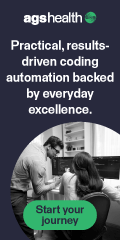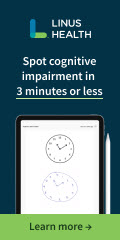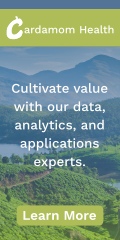Curbside Consult with Dr. Jayne 5/2/22
Today is truly a cleanup day. I’m plowing through 2,300 unread emails. Some days you just can’t make things up with the stories that are out there.
The US Department of Justice announces that a Long Island cardiologist has been charged with crimes related to a COVID-19 healthcare fraud enforcement action. He is alleged to have defrauded Medicare and Medicaid of more than $1.3 million in payments related to COVID-19 testing as he submitted claims to those payers for office visits that were not performed in conjunction with COVID-19 testing. The defendant’s practice had mobile testing sites across Long Island, and apparently some of the billed office visits occurred when the defendant wasn’t even in the state. The prosecution is part of a larger effort by the Department of Justice to crack down on those exploiting the ongoing public health emergency. Criminal charges have been filed against at least 21 defendants for COVID-related healthcare fraud and total nearly $150 million in false claims. The overall Medicare Fraud Strike Force, which was formed in 2007, has gone after more than 4,200 defendants who fraudulently billed Medicare for over $19 billion.
Just a little over a month ago, medical students across the US learned where they’d be doing their training as a result of the National Resident Matching Program. This article about a participant who didn’t match caught my eye. Travis Hughes completed both MD and PhD degrees at Harvard and had a lengthy curriculum vitae with numerous publications and four patents, yet still didn’t match into his desired field of dermatology. More than seven percent of fourth-year medical students in the US failed to match, so he wasn’t alone, although his qualifications likely make him unique. Rather than lament his situation, Hughes used the experience as the push he needed to move towards a career in healthcare technology.
I’m often contacted by people in similar situations looking for advice on moving into healthcare technology or clinical informatics. Not only do unmatched graduates reach out, but those who are in their last year of medical school and who have decided that clinical practice is not for them.
I’m supportive of people finding their bliss in medical careers that don’t involve seeing patients, but have some advice for individuals in this situation. First, just because you graduated from medical school doesn’t mean that you understand what it takes to become a board-certified practicing physician. There’s a lot that happens during the three to seven years of residency training and no amount of reading about it or having friends who are in residency is going to help you become equivalent.
Second, if you’re going to try to find solutions for practicing physicians, you need to understand what happens once you are in practice. Learn what a RVU is or how physician compensation is influenced by patient satisfaction scores and clinical quality metrics. Learn how hard it is to keep a medical practice staffed to a level that provides high quality care but runs as cheaply as corporate employers require.
Third, please don’t talk to practicing physicians like you’ve been in their shoes. Over the past two years, I’ve had many patronizing encounters with physicians who have gone the start-up route. I don’t want to hear about how you dropped out of a surgical subspecialty residency the year before graduation, yet you think you understand what it feels like to be a practicing family physician or an emergency physician dealing with COVID. Sure, you can talk about how you understand the market forces and the pressures we’re under, but you certainly haven’t been there or done that. Also don’t talk about patients like they’re numbers or widgets, because those of us who really treasure the patient/physician relationship aren’t likely to warm to that strategy. If you want to impress us, make sure we feel like you understand that those patients are someone’s mother, grandfather, sister, or child.
Finally, if you’ve decided to take a different path in your career, get some training. If you want to go into clinical informatics, maybe you should join the American Medical Informatics Association. Consider taking one of the 10×10 courses that they offer in partnership with Oregon Health & Science University. Do a fellowship in clinical informatics. Don’t post on physician-focused Facebook groups that you’ve just decided to go into informatics and ask how to get jobs with no experience and no training. Definitely don’t demand that people call you and give you career guidance because you’re too lazy to spend some time on the internet figuring out what it takes to be qualified in the field.
I do wish good luck for all those who are contemplating career changes or who did not match. Much work is ahead and it’s a difficult road. Hopefully, this advice might provide a small amount of insight for those walking it.
I’m doing a fair amount of work with various vendors and have been invited to participate in multiple vendor user group meetings for the upcoming season. While some vendors are going back to their tried-and-true pre-COVID meeting plans, others are using the opportunity to make changes to format and desired attendee profiles. There have been a few recent in-person meetings since HIMSS, and by report, the attendance has been less than previous years. Epic kicked off its XGM Expert Group Meetings last week in Wisconsin and they continue through the end of this week. The American Telemedicine Association meeting is also happening this week in Boston. I’d love to hear from attendees as far as their boots on the ground experiences as well from others who have decided not to attend conferences right now. At least one major health system that I interact with has continued to restrict business travel for the remainder of 2022. They’re not saying employees can’t travel, they’re just refusing to pay for any of it, blaming it on COVID.
Although various states, jurisdictions, and businesses have collectively decided that COVID-19 is over, it’s starting to make a return in my area. Several schools are hitting the thresholds for which students and teachers have to resume masking. I’ve got a couple of flights this week, and despite the airlines’ movement to a mask optional arrangement, I’ll be sporting a KN-95. Even though the COVID infections that most people are getting now are relatively mild, we’re starting to see much more long-term data that shows that even people with mild infections are at higher risk for cardiovascular and other complications. I’ve dodged it so far and am hoping my luck holds.
From a patient care perspective, it’s the school and sports physical season as young people get ready to go away to camps or to prepare for fall sports. Our state has instituted a special process for return to play in youth who have had COVID, and we’re finding quite a few athletes who aren’t as healthy as they thought they were before we started asking some very pointed questions.
Is COVID-19 still playing a role in your habits or travel plans? Is your employer still requiring any mitigation strategies or is everyone back to the office as usual? Leave a comment or email me.

Email Dr. Jayne.






























































































The primary point of using the Cloud is using operating expenses vs limited capital ones and avoiding having to update…